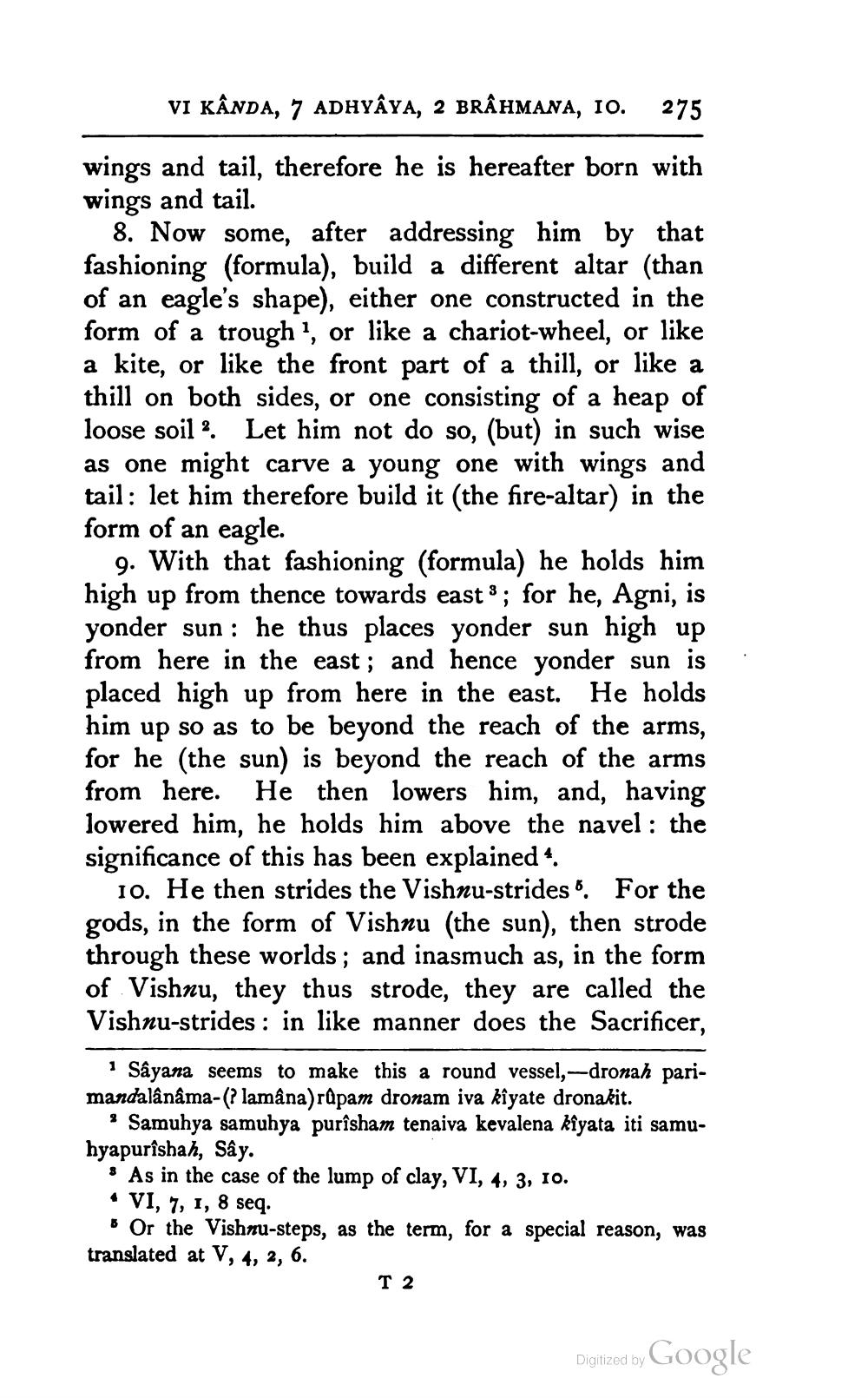________________
VI KÂNDA, 7 ADHYAYA, 2 BRÂHMANA, 10.
275
wings and tail, therefore he is hereafter born with wings and tail.
8. Now some, after addressing him by that fashioning (formula), build a different altar (than of an eagle's shape), either one constructed in the form of a trough ?, or like a chariot-wheel, or like a kite, or like the front part of a thill, or like a thill on both sides, or one consisting of a heap of loose soil ?. Let him not do so, (but) in such wise as one might carve a young one with wings and tail: let him therefore build it (the fire-altar) in the form of an eagle.
9. With that fashioning (formula) he holds him high up from thence towards east s; for he, Agni, is yonder sun : he thus places yonder sun high up from here in the east; and hence yonder sun is placed high up from here in the east. He holds him up so as to be beyond the reach of the arms, for he (the sun) is beyond the reach of the arms from here. He then lowers him, and, having lowered him, he holds him above the navel : the significance of this has been explained
10. He then strides the Vishnu-strides. For the gods, in the form of Vishnu (the sun), then strode through these worlds; and inasmuch as, in the form of Vishnu, they thus strode, they are called the Vishnu-strides : in like manner does the Sacrificer,
Sâyana seems to make this a round vessel, ---dronah parimandalânâma-(? lamâna)rQpam dronam iva kiyate dronakit.
. Samuhya samuhya purîsham tenaiva kevalena kiyata iti samuhyapurishah, Sây.
* As in the case of the lump of clay, VI, 4, 3, 10. • VI, 7, 1, 8 seq.
6 Or the Vishnu-steps, as the term, for a special reason, was translated at V, 4, 2, 6.
T2
Digitized by Google




